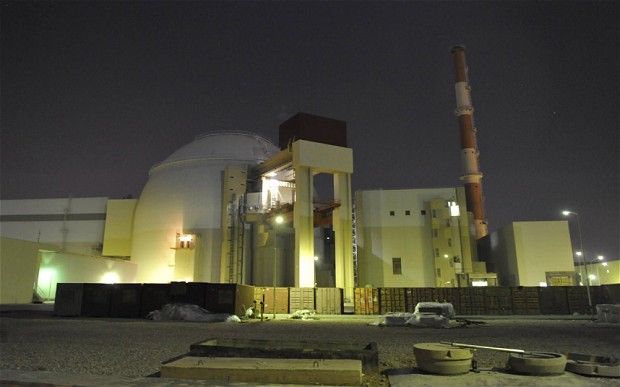Time For Tough Choices In Iran Nuke Talks
Posted on
It is now clear that differences in negotiations between Iran and six major powers led by the United States remain intractable, despite the conciliatory words and much friendlier atmosphere which have reigned in recent months. When the two sides met in Vienna last week for a first round of hard-core haggling after months of laying out their positions, it was as if they had run into a wall. Instead of confidently saying an agreement over Iran’s nuclear ambitions could be reached by the July 20 deadline, officials were now talking of “significant gaps” in their positions. It is “not about being optimistic or not optimistic. It is about being realistic,” a senior US official said.
The official said the six nations negotiating with Iran – the United States, Russia, China, Britain, France and Germany – now were “worried about the short time left” until the deadline, the US official said. “In any negotiations you have good days and bad days,” the official said. The Wednesday to Friday meeting in the Austrian capital was clearly among the bad ones. “We need to see some tough decisions being made … more than we’ve seen thus far,” the US official said, referring to such matters as the number of centrifuges Iran will get to keep. Iranian negotiators meanwhile were talking about the deadline possibly being extended six months until next January but the American said the six nations still had a “sense of urgency” about reaching an agreement in July.
There are to be more senior-level talks in June; experts from the two sides are consulting on a full-time basis. Talks are expected to become non-stop as the July 20 deadline nears. The bottom line is that the fundamental divide which has existed since the beginning of the Iranian nuclear crisis in 2002, when secret Iranian nuclear work was first revealed, has not diminished. The devil may be in the details in the talks but the details reflect ways of thinking about nuclear goals and needs. Compromising on issues such as centrifuges, which refine uranium into either reactor fuel of bomb material, are as political as they are technical and therein lies the rub. Here is a look at what the main issues are going forward:
Centrifuges
These are at the heart of Iran’s capability to produce enough high-grade uranium to do a so-called “break-out” and to make a bomb. Iran currently has some 19,000 centrifuges installed, 10,000 of which are actually enriching uranium gas into higher levels of the isotope U-235, which is used for fission. Low enriched uranium is used for power reactors. High enriched uranium can be used for atom bombs. At its current capacity, Iran could “break-out” and make enough high-enriched uranium for one atom bomb in about two months, although estimates about this differ. Israel has said it expects Iran to be reduced to at least a one-year break-out time.
The United States also wants Iran to reduce its number of centrifuges. The Iranians say they won’t do this. They argue that their right to enrich is inalienable under the Non-Proliferation Treaty, which authorizes the peaceful use of nuclear energy. The Iranians also argue that a “break-out” to make a weapon would be a political decision, which could take place no matter how many centrifuges were turning. Iranian officials now talk about having 100,000 or more centrifuges in order to make enough fuel for power reactors. Iran has only one power reactor at the current time, the Bushehr plant which is fueled by the Russians. It says it wants eventually to fuel Bushehr and to build more power reactors.
There is another quite significant wrinkle. Iran claims an unrestricted right to do research, including on advanced centrifuges which could enrich uranium more quickly than more basic models. If Iran perfected these machines, then the number of centrifuges would not matter. They could enrich the same amount of uranium with fewer centrifuges. The solution to this might be to limit the total capacity of enrichment, the number of “SWU” (Separative Work Units), instead of the number of centrifuges.
Arak
This is the heavy-water reactor under construction. When finished it could produce plutonium, like uranium a bomb material. Iran has said it is ready to accept a technical fix, such as fueling the reactor in a way that reduces its proliferation risk. But whatever fix is found, a problem remains. Once the reactor is fueled it can not be bombed because of the risk from radiation contamination. Israel may oppose any fueling of the Arak reactor, which is, by the way, above-ground and therefore open to attack.
The Other Hard Points
There are a host of other issues, such as calls on Iran to clarify possible military dimensions of its nuclear work, particularly past work. This goes to the heart of Iran’s intentions; Iran has been stonewalling on this issue since 2008.
There is also the question of Iran’s missile work, since a bomb needs a delivery vehicle. Iran has refused to discuss its missile work within the framework of the talks on a comprehensive agreement, but the United States insists that this must be a matter for discussion.
Sanctions are, of course, also an issue. Iran may press for faster and wider sanctions relief if it compromises on its positions. The sanctions have limited Iran’s oil sales and cut into its ability to do business internationally.
It is not a good sign that drafting an agreement failed to begin in Vienna last week. Achieving a deal is still a long shot. But there is a great deal of negotiating yet to come, and both the United States and Iran, the main players, have invested much in the current diplomacy.
Michael Adler, an expert on Iranian nuclear issues at the Woodrow Wilson Center, writes regularly on the issue for Breaking Defense.
Subscribe to our newsletter
Promotions, new products and sales. Directly to your inbox.

